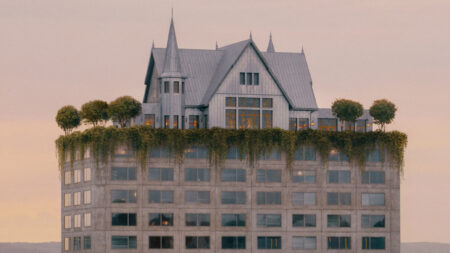Remember that dilapidated slum district at Johannesburg shown in the movie District 9? Well, in many ways the scenario describes the substandard side of cramped urban conditions. However, architecture student Ofir Menachem from Tel Aviv University believes our salvation also lies in our urban areas. As a result, he has conceptualized a cityscape that might be the solution to collective living on a large scale. Christened as the Digital Constructive Shell, his project combines the essence of the Bauhaus past from the 1930’s and the futuristic ambit of contemporary architectural advancements. And, which actual area was this massive endeavor inspired by? Well, the answer is fittingly Jerusalem, one of the oldest inhabited cities in the world.
In terms of design, we can see the expansive scale of the Digital Constructive Shells. Comprising of swooping balconies and curvaceous roofs, each level of the housing units seems to be connected by historically relevant public access mechanisms like huge stairways. This scope creates a simple yet efficient circulation feature for the residents, almost like the entire cityscape functioning as a single gargantuan building.
The individual advantages of the housing units also stand out with their large window systems and extended floor areas. The unique ‘butterfly’ like arrangement of the ceiling level windows acts as the visual as well as psychological facade for the city inhabitants, while at the same time endowing sufficient privacy to the residents. The spread-out floor areas on the hand allow more space for comfortable living within a city eco-system.
So in essence, the horizontal scale of the Digital Constructive Shells deal with the spatial abundance available for the inhabitants. At the same time, the vertical nature of the conception relates to number of living units within the ‘collective’ cityscape.
Via: YankoDesign
Follow Homecrux on Google News!




